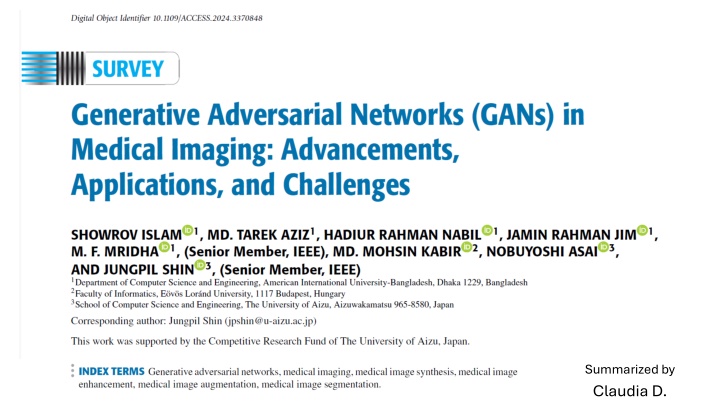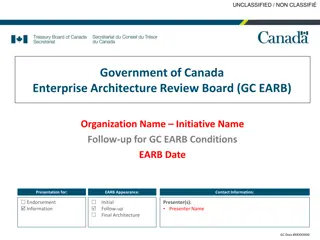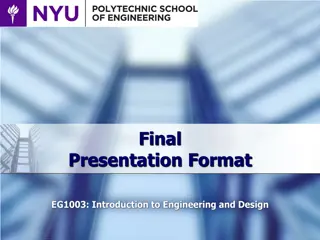
Powerful Generative Adversarial Networks in Medical Imaging
Discover the power of Generative Adversarial Networks (GANs) in medical imaging, where two neural networks collaborate to generate realistic images and handle domain shifts. Explore challenges, popular GAN models like CycleGAN and ProGAN, and potential solutions for diverse image synthesis across domains.
Download Presentation

Please find below an Image/Link to download the presentation.
The content on the website is provided AS IS for your information and personal use only. It may not be sold, licensed, or shared on other websites without obtaining consent from the author. If you encounter any issues during the download, it is possible that the publisher has removed the file from their server.
You are allowed to download the files provided on this website for personal or commercial use, subject to the condition that they are used lawfully. All files are the property of their respective owners.
The content on the website is provided AS IS for your information and personal use only. It may not be sold, licensed, or shared on other websites without obtaining consent from the author.
E N D
Presentation Transcript
Summarized by Claudia D.
Not the only generative method (next time: GAT) YAY! Book chapter with 172 ref(s) Summarized by Claudia D.
Whats so cool about GANs? Generative Adversarial Networks (GANs) stand out as a powerful class of neural networks that use parallel training of two networks for image generation and discrimination. ability to produce realistic images (image enhancement) and handle domain shifts [1]. GANs in medical imaging involve two neural networks where one is the generator (G) and another is the discriminator (D). The generator The generator produces synthetic medical images from random noise, aiming to replicate real data Objective: maximize (for real data) log?(?) and minimize (for generated data) log(1 ?(?(?|c))) = increase confidence (real data). The discriminator The discriminator evaluates and differentiates between genuine and generated images. Objective: Minimize log(1 ?(?(?)))) = minimize the likelihood of classifying fake data as real, meaning it wants ?(?(?)) to be as close to 0 as possible for generated samples. GAN framework sets up a minimax optimization minimax optimization problem: logarithmic functions are steeper at smaller probabilities and flatter near 1
Challenges Optimization might suffer convergence problems (due to the min-max nature of the GANs, they might reach equilibrium difficultly). Privacy concerns and trust-ability of generated data. Limited integration with models from other domains and multimodal medical image augmentation Needs advanced metrics for evaluation (NOT pixel-wise metrics). Prone to lacking geometric correlations Prone to lacking geometric correlations (important for microscopic imaging). > The Bidirectional Generative Adversarial Network (Bi-GAN) -promising solution for synthesizing diverse microscopic images across multiple domains. > Adding noise to discriminator (penalizing discriminator weights) > Incorporating physics-based simulations >Attention mechanism, Transformers > learned perceptual image path similarity > Lighter GAN architectures > Suitable metrics and constraints Lack of interpretability and high training cost. Class leakage Skewed distribution of medical data = rare cases are likely not gonna be generated.
Popular GAN (medical) CycleGAN is used for domain adaptation by translating images in different modalities [3] pix2pix focuses on translation between images by supporting tasks such as resolution enhancement or denoising of medical images [4]. UNIT GAN enables cross-modal image fusion in medical imaging by learning a shared latent space between different modalities. ProGAN (progressive training) makes it easier to produce high-resolution medical images (~2017). SAGAN focused on relevant image regions and long-term relationships (~2019). RANDGAN emphasize segmentation for anomaly detection (outperforming traditional GANs). DGGAN generates anonymous brain vascular images for medical imaging from MRA patches [11]. ED-GAN combines VAEs (variational autoencoders) and GANs [12]. PLGAN (Pseudo-labeling) only uses a small number of real images with few labels to generate fake images or mask images to enlarge the sample size of the labeled training set.
Dive into Segmentation Conditional Generative Conditional Generative Adversial supplementary information into the generative model, thereby enabling the controlled synthesis of generated data. The supplementary information is typically encoded as a one-hot vector within both the discriminator and the generator. Subsequently, it is combined with an encoded noise vector (z) within the generator and with the actual data (x) within the discriminator. The discriminator itself cannot produce the class label for the input data. It is common for cGANs to necessitate pairs of input and output images during training, a requirement that might not always be met in domain adaptation scenarios. Adversial Networks (CGAN) Networks (CGAN) introduce Generator: Generator: Instead of generating an entire image from random noise, the generator ? is responsible for producing a segmentation map segmentation map (a pixel-wise classification map) from an input image. Some other varieties: CycleGAN, SSimDCL, DualMMP-GAN. Evaluation metrics used: SSIM, PSNR, accuracy, AUC, Dice coefficient, MAE, ROC curve, IoU, entropy, and normalization.
Results Histology Paper (2018): Application to quantification of Ki67 breast cancer images - Senaras et al. Optimized generation of high-resolution phantom images using cGAN Result: Six readers (three pathologists and three image analysts) tried to differentiate 15 real from 15 synthetic images and the probability that the average reader would be able to correctly classify an image as synthetic or real more than 50% of the time was only 44.7%.






















